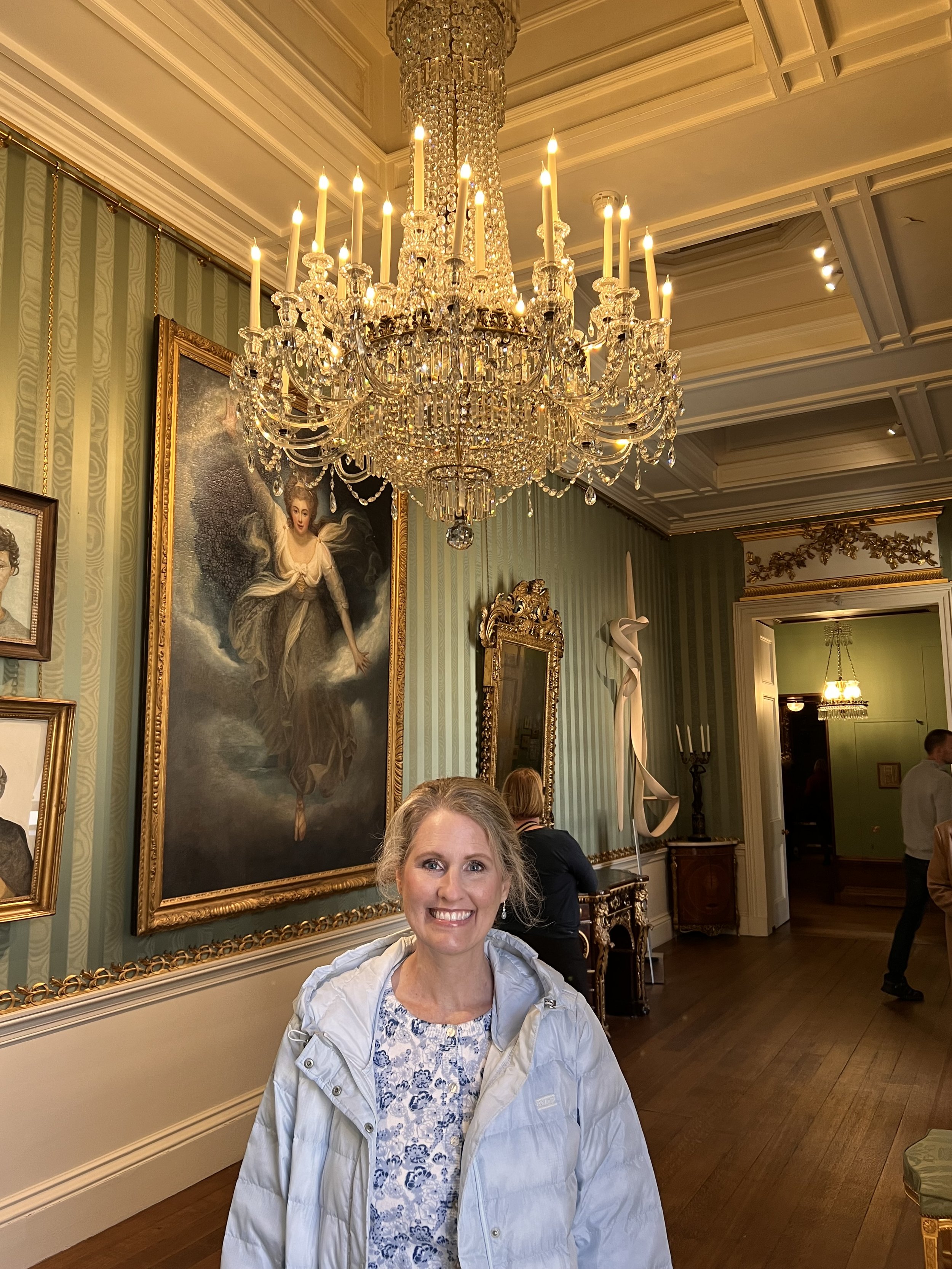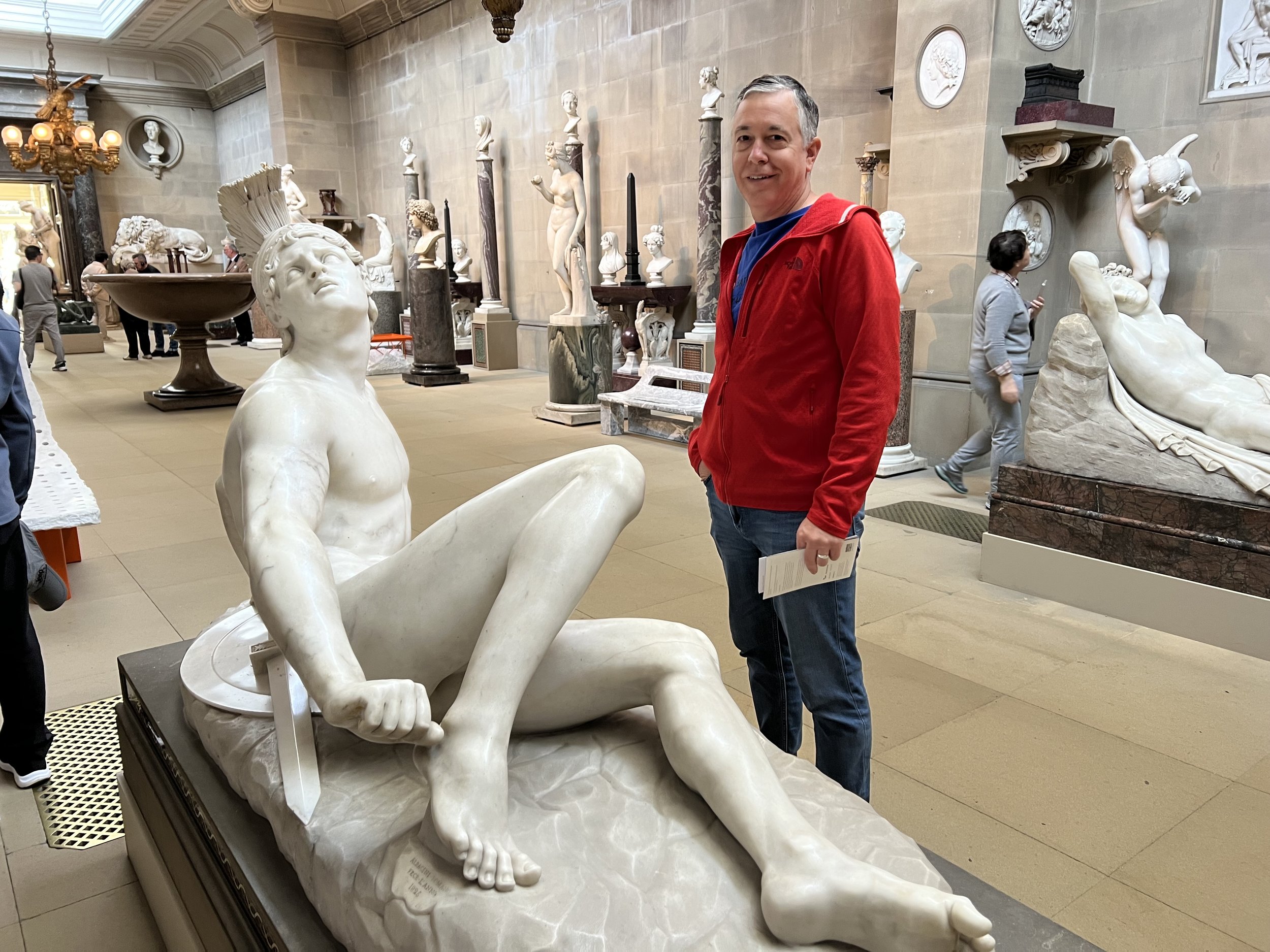Chatsworth
“A change in the weather is sufficient to recreate the world and ourselves.”
There has been a house on this site since the 1550s. The first house was built for Bess of Hardwick (1527-1608) and Sir William Cavendish (1505-1557). They established the Cavendish family line from which the earls and dukes of Devonshire are descended.
Elizabeth Cavendish, known as Bess of Hardwick, was instrumental in the creation of the Chatsworth estate. After her second marriage to Sir William Cavendish, the couple bought land here as it was close to Bess’s childhood home.
The couple were happily married and had eight children but Bess was widowed for a second time aged only 30. She married twice more, amassing great wealth and influence.
Although the house itself has been rebuilt since Bess’s time, her vision and passion for building can still be seen in the Hunting Tower (c 1580) on the hill in Stand Wood.
Used to welcome and impress guests, the Painted Hall was built between 1689 and 1694 and was the largest and grandest room built in the 1st Duke’s lifetime.
Fed up with Catholic rule, the 1st Duke was part of a group of nobles who invited the Protestant William of Orange to invade England in 1688. After the revolution’s success, the earl engaged the Palace of Versailles painter Louis Laguerre to flatter the new monarchs with a set of murals depicting scenes from the life of Julius Caesar and ancient Rome.
These paintings and the magnificent ceiling connected the monarchy of the time to Caesar. They were made with the hope that King William and Queen Mary would visit Chatsworth and be flattered by this tribute to them.
In the end, the royal couple never visited Chatsworth, but the trick worked, and in 1694 William III and his wife Mary granted the earl the title 1st Duke of Devonshire.
Sadly, during our visit Chatsworth House was playing host to the Mirror Mirror modern art exhibition. Throughout the house, entire rooms were rearranged, and in some cases completely overshadowed, by the “pieces.” The Library is a masterpiece of a room. In this case the “art” was incongruous, but at least it somewhat supported the look of the room. (It gets worse as we move throughout the house.)
The Library normally. A thousand times better, right?
Just in case you think I’m being pedantic about the modern art, here is just one example to make my point. I don’t know what the “artist” called this piece and what it’s deep philosophical significance is, but we simply called the piece “Used Condoms on Violet.”
The “art” chairs certainly detracted from the ambiance; however, the Great Dining Room did its level best to fight against the hideous intrusion and remained resplendent in red and gold and warm light.
How the room is meant to look.
The biblical story of Doubting Thomas is shown in Verrio’s oil painting above the alter and again in the ceiling painting above the gallery. Thomas had to touch Christ to believe he had risen from the dead. It might have been considered a good subject to match with the family motto, Cavendo Tutus, meaning safety through caution. Saint Thomas is also the patron saint of architects and the 1st Duke saw himself as the architect of Chatsworth.
(Please excuse the abominations in the middle of the room. Focus instead on the true art: the brilliant wall and ceiling paintings, the skilled wood carvings, and the expertly carved altarpiece of local alabaster and black marble and other stonework.)
The Chapel Gallery is a near perfect example of Baroque room decoration—identified through detailed decoration, deep color, and grandeur designed to evoke an emotional response. A Doubting Thomas painting is repeated above the arch.
In the film The Duchess, the young Georgiana is contracted in marriage to the 5th Duke of Devonshire. The estate of the Dukes of Devonshire was, and still is, Chatsworth House. Given that this was the true home of “The” Duchess, it is fitting that the candle-lit wedding between the Duke and the soon-to-be Duchess, was filmed in the Chatsworth House Chapel.
Ceiling painting of the resurrection of Christ by the French artist Louis Laguerre (1663-1721).
This room was known as the Second Withdrawing Room, but the 6th Duke’s musically themed additions, meant that the new name was adopted—State Music Room.
Through the open doorway at the back of the room, you see a violin and bow suspended on a blue ribbon on the back of another door. Or do you?
The violin is an example of trompe l’oeil (a trick of the eye)—used by artists to create optical illusions. Successfully tricking the eye requires high levels of technical skill that was certainly achieved in spades here. In fact, the raised door panels themselves are a painted effect. Now that, is truly art!
My wife and her love of shiny objects.
Behind her is a portrait of “The Duchess.” In 1781 Italian-English artist Maria Cosway was commissioned by Georgiana Cavendish, Duchess of Devonshire, to produce a portrait of the Duchess but depicted as Cynthia from the epic English poem “The Faerie Queen” written by Edmund Spenser.
The poem was dedicated to Queen Elizabeth I and follows the knights and ladies of the Queen’s court in a mythical fairy land to explore the meaning of virtue. Cynthia was the goddess of the moon and one of the heroes in the story.
You may recall from my post about Lauriston Castle outside Edinburgh, way back from December 4, 2022, that Blue John is a semi-precious mineral, a rare form of fluorite with bands of a purple-blue or yellowish color.
It is only found in Blue John and Treak Cliff Caverns in Castleton, which is very near Chatsworth House.
While the world’s largest collection of Blue John pieces are found inside Lauriston Castle, the largest piece is at Chatsworth. The softness of the mineral means it looks amazing when illuminated internally.
The 6th Duke of Devonshire visited the studio of Raffaelle Monti in Milan, Italy, in October 1846. He ordered the marble A Veiled Vestal Virgin sculpture, which it was ready to be dispatched to England in April 1847.
In Ancient Rome, the Vestals were virgin priestesses whose lives were dedicated to the goddess Vesta. They were tasked to look after the sacred fire burning on her altar in the temple of Vesta, and were regarded as fundamental to the safety of Rome. The discovery of a "House of the Vestals" in Pompeii in the 18th century made Vestals a popular subject matter in art over the following 50 years.
The statue first came to Chatsworth in 1999 and was shown in the Sculpture Gallery where it appeared in the 2005 film Pride and Prejudice, starring Keira Knightley and Matthew Macfadyen.
Although carved in stone, the veil appears soft and sheer with astonishing effect.
2005 Pride and Prejudice
Achilles with an arrow to the heel (2023).
2009
2005 Pride and Prejudice
Marble sculpture of Bacchante with a tambourine and snake. Bacchantes were priestesses who were asked to raise Bacchus—son of Zeus and, later, the god of wine, festivity, madness.
The amazing detail on the snake.
2005 Pride and Prejudice
Marble statue of Paolina Maria Borghese, better known as Pauline Bonaparte. Her elder brother, Napoleon, was the first emperor of the French. His favorite sister, the exquisitely beautiful and loyal Paolina, is shown looking at a portrait of her brother.
They do say Napoleon had a swelled head.
Crouching Lion, after Canova, by Rinaldo Rinaldi, 1823.
Sleeping Lion, after Canova, by Rinaldo Rinaldi, 1825.
Such detail
"Does the young lady know Mr Darcy?"
Elizabeth coloured, and said: "A little."
"And do not you think him a very handsome gentleman, ma'am?"
"Yes, very handsome."
The statue of Matthew Mcfadyen (Mr Darcy) used in the Pride and Prejudice film. The plaque included the instruction, “Please do not kiss!”
“Elizabeth was delighted. She had never seen a place for which nature had done more, or where natural beauty had been so little counteracted by an awkward taste.”
-Jane Austen, Pride and Prejudice
“Time, which changes people, does not alter the image we have retained of them.”
From inside the house, the Emperor Fountain and Canal Pond in the distance.
April 2009
May 2023
April 2009
May 2023
“Elizabeth, as they drove along, watched for the first appearance of Pemberley Woods with some perturbation; and when at length they turned in at the lodge, her spirits were in a high flutter.
“The park was very large, and contained great variety of ground. They entered it in one of its lowest points, and drove for some time through a beautiful wood stretching over a wide extent.”
-Jane Austen, Pride and Prejudice
In the garden’s Pinetum (apparently that’s a word). 🧐
Now this is art I can support. 😊 These are sections of tree, charred and arranged within the Pinetum.
Looking down Hundred Steps to the Maze.
Amanda at the tree in the maze’s center in 2009.
The Cascade was the highlight of the 1st Duke’s garden—taking 17 years and two attempts before it was finished.
The Duke may have been inspired by water features he saw in France. He employed a French engineer, Grillet, to design the Cascade.
The water for the Cascade is not recirculated and pumped to the top. Rather, it comes from the open moorland behind the top of the hill to the east, carried along a series of man-made streams and an aqueduct, before flowing out onto the Cascade.
The temple was designed by Thomas Archer. Water can be made to flow over the roof and out of 13 spouts, including the mouths of the stone dolphins (they look more like sturgeons), and there are even hidden jets in the temple’s floor.
The temple and the Cascade were restored between 1994-96.
Each step is different so the sound of the water changes as it falls.
After the Cascade, the water flows underground, then makes appearances through two additional water features before returning to a natural stream.
April 2009
May 2023—We spent the next half hour lying on the grass, enjoying the warmth of a perfect sunny Sunday Derbyshire afternoon.
Afterward, we stopped off at the Chatsworth Estate Farm Shop to buy groceries. Pam, you’ll be happy to know we bought fresh broccoli. Then our triumphant return to Sainsbury’s groceries in Bakewell. Oh how we have missed our Sainsbury’s for the past month!
On so many levels it was absolutely wonderful to be back in the Peak District. It was our instinct to base our very first visit to England largely in this area fourteen years ago. That turned out to be exceptionally good intuition, as it retains its standing as a favorite place. Feels like home…well, almost! 😅

























































